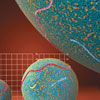
May 2012 Br J Cardiol 2012;19:79–84 doi:10.5837/bjc.2012.016
Alan Begg, Susan Connolly, Julian Halcox, Agnes Kaba, Linda Main, Kausik Ray, Henry Purcell, Helen Williams, Derek Yellon
Abstract

Background
Observations on fish consumption in general
Populations who consume large amounts of oily fish in their diet tend to have lower rates of coronary heart disease (CHD) and sudden cardiac death (SCD). Fish oils are rich in omega-3 polyunsaturated fatty acids (PUFAs), which have demonstrable cardioprotective properties. In line with these observations, extensive epidemiological data – including large meta-analyses – demonstrate clear associations between both increased fish consumption and increased omega-3 PUFA levels with a favourable cardiovascular prognosis.1-3
Most of the evidence for benefits has been observed in individuals
|
Full text
March 2012 Br J Cardiol 2012;19:15
Rachel Warner
Abstract

Iodine deficiency, thyroid stimulating hormone and cardiovascular disease
Dear Sirs,
The UK has been classified as iodine deficient. This causes an increase in thyroid stimulating hormone (TSH), which also raises cholesterol. Would it be wise to test for an iodine deficiency in patients with raised cholesterol?
The American Association of Clinical Endocrinologists recommend an upper limit for TSH of 3.0 mIU/ml for the normal reference range. I believe our UK endocrinologists are partly to blame for neglecting a suboptimal thyroid function which causes cardiovascular disease (CVD). This theory can be related to countries like Japan tha
|
Full text

March 2012 Br J Cardiol 2012;19:26–9 doi:10.5837/bjc.2012.005
Alison MacEwen, Gerard A McKay, Miles Fisher
Abstract

Introduction
Type 2 diabetes mellitus is a major risk factor for developing both microvascular (retinopathy, nephropathy and neuropathy) and macrovascular complications (coronary heart disease, cerebrovascular disease and peripheral vascular disease).1 The link between maintaining good glycaemic control and prevention of these complications is well established.2-4 Guidelines recommend a target glycosylated haemoglobin (HbA1c) of 7% or less, but a large number of patients fail to meet this target and, as of yet, no ideal pharmacological blood glucose-lowering agent exists.
Existing pharmacological therapies, which have been previously describ
|
Full text
March 2012 Br J Cardiol 2012;19(Suppl 1):s1-s16
Abstract

This supplement is a report from the inaugural meeting of the Cardiometabolic Forum, jointly organised by the British Journal of Cardiology and HEART UK – The Cholesterol Charity. The meeting was held at the Royal Pharmaceutical Society, London, on 24th November 2011. Meeting chairs were Dr Dermot Neely (Royal Victoria Infirmary, Newcastle upon Tyne) for HEART UK, and Dr Henry Purcell (Royal Brompton Hospital, London, and Editor) for BJC.
We hope this supplement will provide readers with an independent overview on recent developments in our knowledge of cholesterol metabolism and its implications for clinical practice.
Speakers
Dermot Neely
|
Full text

March 2012 Br J Cardiol 2012;19(Suppl 1):s1-s16 doi:10.5837/bjc.2012.s01
Kausik K Ray
Abstract

Worldwide, cardiovascular disease remains the leading cause of death and a major cause of disability affecting quality of life.1 Elevated cholesterol is one of the key risk factors accounting for a substantial proportion of this disease burden. In developed countries, at least one-third of all cardiovascular disease is attributable to five risk factors: smoking, excessive alcohol intake, elevated blood pressure, elevated cholesterol and obesity.2 In particular, elevated cholesterol accounted for 56% of all cases of coronary heart disease (CHD) and 18% of cases of ischaemic stroke (2002 data).2
Improved management of risk factors and
|
Full text

April 2011 Br J Cardiol 2011;18:78−81
Ganesan Arungarinathan, Gerard A McKay, Miles Fisher
Abstract

(more…)
|
Full text

April 2011 Br J Cardiol 2011;18:53
Cathal Daly
Abstract

Requirements
A range of providers, including GP practices and pharmacies, are carrying out NHS Health Checks. Whoever the provider, the NHS Health Check should be carried out in a setting or area that allows a private conversation to take place, face to face. The QRISK2 risk tool is the preferred tool for calculating the overall risk of developing CVD as it appears to take better account of ethnicity and deprivation. However, as the QRISK2 risk tool is currently not integrated into all GP practice clinical systems, the Framingham risk tool is also being used until such time as the QRISK2 is more widely available.
All patients who undergo an
|
Full text

November 2010 Br J Cardiol 2010;17:279–82
Christopher J Smith, Miles Fisher, Gerard A McKay
Abstract

(more…)
|
Full text
March 2009 Br J Cardiol 2009;16:102–4
Sunreet K Randhawa, Harleen K Dhillon, Tarvinder S Dhanjal, D Gareth Beevers
Abstract

Introduction
Drugs that block the renin–angiotensin–aldosterone system, the angiotensin-converting enzyme inhibitors (ACEIs) and the angiotensin-receptor blockers (ARBs), have been shown to be effective in the management of hypertension, heart failure and several forms of renal disease including diabetic nephropathy. For this reason, the use of these agents is likely to increase steadily in the coming years. It is also clear from many of the randomised controlled trials that there is a dose-response curve for these agents, with higher doses being more effective.1-6 In the course of our clinical practice in acute general medicine, we obser
|
Full text
January 2009 Br J Cardiol 2009;16:20-21
BJCardio editorial staff
Abstract

More than just a postcode
The keynote session, ‘Cardiovascular disease and deprivation; more than a postcode’, heard from public figures and leading clinicians defining deprivation as it relates to cardiovascular disease from various perspectives. Professor Roger Boyle (National Director, Coronary Heart Disease and Stroke) said that, despite the “considerable progress” seen across all age groups and genders in cardiovascular disesase (CVD) reduction, there remains a gap between deprived and non-deprived areas, and between different social classes.
“Deprivation and social class are key risks for mortality in CVD, yet, the map of spen
|
Full text








